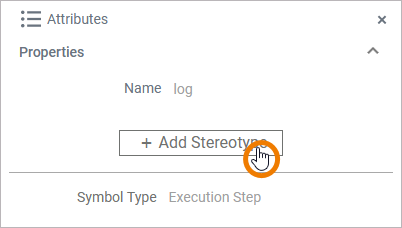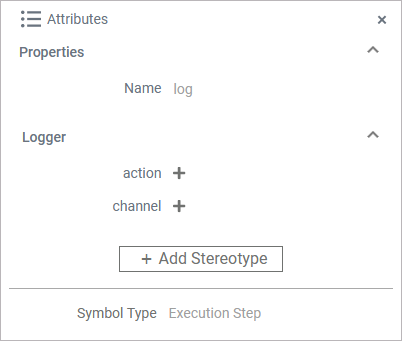Logger Adapter
With the Log Adapter you can write log messages to the standard or transaction log of an xUML service. To write these log messages, you can use
the Log adapter, see
action script (see the log() Function and report() Function)
The logging follows the channel and sinks concepts.

For more information on the logger concept, refer to xUML Runtime Logger Configuration.
Adding a Logger Adapter Operation to a Diagram
Expand the path to the Logger adapter in the service panel (Base Types/Bridge Base/Base Components/Add Ons/Logger):

You can drag out operations from the data model to any diagram:
The example shows how to add a Logger adapter operation to a BPMN execution diagram:

Configuring a Logger Adapter Operation
Once a Logger operation has been added to a diagram, it needs to be configured as a Logger adapter. Select the newly added Logger adapter operation and switch to the Attributes panel:

Depending on the diagram type you can see the following information (example BPMN execution diagram):
Attribute | Description | Allowed Values / Example |
|---|---|---|
Name | The name of the Logger adapter operation. | log |
Symbol Type | Operations added to a execution diagram are execution steps. | Execution Step |
All this is predefined and cannot be changed.
Click Add Stereotype to define the selected operation as to be a Logger adapter:

Select Logger from the list of available adapter stereotypes. Click Save:

The Attributes panel shows the added adapter stereotype. Now you still need to configure the adapter. Expand the stereotype by clicking the arrow on the right:

To configure the Logger adapter, you have the following options:

action: For the logger adapter you have to configure an adapter action. For more information see below.
channel: This option is not enabled yet, but will be available to you soon.
Click the text Select an option or the arrow on the right and select the name of the respective operation as action from the drop-down list:

If the action is not set, the Logger adapter always defaults to log.
Refer to Logger Adapter Reference for detailed information.
